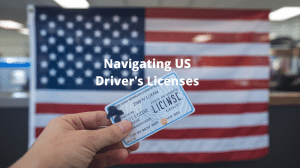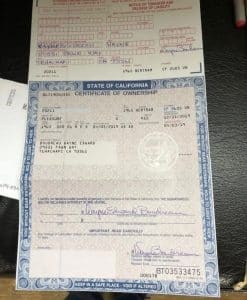Why Checking Your Driver’s License Status Matters
As a driver in California, keeping track of your license status is crucial. Whether you’re a car owner, bus driver, or work in transportation, your driver’s license is your key to the road. But did you know that traffic violations can affect your license status? That’s why it’s important to regularly check where you stand.
Knowing how to check your driver’s license status in California isn’t just about avoiding fines or legal trouble. It’s about being a responsible driver and ensuring you’re always ready to hit the road safely and legally. Let’s dive into the details of why this matters and how you can stay on top of your license status.
Common Reasons for License Status Changes
Before we get into the how-to, let’s look at some reasons your license status might change:
- Accumulating too many points on your driving record
- Failing to pay traffic fines
- Getting caught driving under the influence (DUI)
- Letting your license expire
- Not appearing in court for a traffic violation
These are just a few examples. The California Department of Motor Vehicles (DMV) takes driving infractions seriously, and any of these could lead to a suspension or revocation of your license.
How to Check Your Driver’s License Status in California
Now, let’s get to the main point: how can you check your driver’s license status in California? There are several methods available, and we’ll cover each one in detail.
Online Method: Using the California DMV Website
The easiest and quickest way to check your license status is through the California DMV website. Here’s a step-by-step guide:
- Visit the official California DMV website
- Look for the “Online Services” section
- Click on “Driver License Status”
- You’ll need to provide some personal information:
- Your driver’s license number
- The last four digits of your Social Security number
- Your date of birth
- After entering this information, you’ll be able to view your current license status
This method is convenient because you can access it 24/7 from anywhere with an internet connection. It’s perfect for those who are comfortable with online services and want immediate results.
Phone Method: Calling the California DMV
If you prefer talking to a real person or don’t have internet access, you can call the California DMV. Here’s what you need to do:
- Dial 1-800-777-0133
- Navigate through the automated menu to reach a representative
- Provide your personal information (driver’s license number, SSN, date of birth)
- Ask about your current license status
Remember that this method may involve wait times, especially during busy hours. It’s a good option if you have additional questions or need clarification about your status.
In-Person Method: Visiting a DMV Office
For those who prefer face-to-face interactions or need immediate assistance, visiting a DMV office is an option. Here’s what to do:
- Find your nearest DMV office using their website or phone service
- Gather necessary documents (driver’s license, ID)
- Visit the office during business hours
- Request a check on your license status from a DMV representative
While this method might take more time due to potential queues, it allows for direct communication and the ability to address any issues on the spot.
Understanding Your Driver’s License Status
When you check your status, you might encounter different terms. Here’s what they mean:
- Valid: Your license is current and in good standing
- Suspended: Your driving privileges have been temporarily withdrawn
- Revoked: Your license has been canceled and you need to reapply
- Expired: Your license is no longer valid due to passing its expiration date
- Restricted: You can drive, but with certain limitations
Understanding these terms helps you know where you stand and what actions, if any, you need to take.
What to Do If Your License Is Not in Good Standing
If you find out your license isn’t valid, don’t panic. Here are some steps you can take:
- Identify the reason for the status change
- Pay any outstanding fines or fees
- Complete any required courses (like traffic school)
- Provide any necessary documentation to the DMV
- Apply for reinstatement if your license was suspended or revoked
Remember, driving with a suspended or revoked license is illegal and can lead to serious consequences. It’s always better to address the issue head-on.
Staying Proactive: Regular Status Checks and Safe Driving
To avoid surprises, it’s a good idea to check your license status regularly. Here are some tips:
- Set reminders to check your status every few months
- Always pay traffic fines promptly
- Attend all court dates related to traffic violations
- Practice safe driving to avoid accumulating points on your record
- Keep your address updated with the DMV to receive important notices
By staying proactive, you can ensure that your right to drive remains intact and avoid the stress of unexpected license issues.
Conclusion: Take Control of Your Driving Privileges
Knowing how to check your driver’s license status in California is an essential skill for all drivers. Whether you’re a daily commuter, a professional driver, or someone who only drives occasionally, staying informed about your license status is crucial.
By using the methods we’ve discussed – online, phone, or in-person – you can easily keep track of your driving privileges. Remember, your license is more than just a card; it’s your ticket to freedom on the road. Stay informed, drive safely, and enjoy the journey!






